Agriculture in education- video
This is a selection of the videos produced by the Agriculture in Education program. The videos were produced by project partners AgriFood Skills Australia and the Primary Industries Education Foundation Australia.
PIN number: FVYFEN
-


M019391 A Year on a Farm: producer video
- Published 08/04/2015
- TLF-ID M019391
This is a video about operation of an organic orchard near Kalangadoo in South Australia and the commitment to biodiversity of its owners Michelle and Chris McColl. Michelle McColl describes and illustrates the annual cycle of work with the trees and fruit while discussing the economic and agronomical advantages of the farm's transformation from a monoculture of a few varieties of apples to its present diversity of more than 90 varieties plus 30 varieties of stone fruit. She lists the types of sales outlets they use and how they value-add with dried apples, apple juice and apple cider vinegar. She introduces the various farm animals, explaining the roles they play and emphasising that biodiversity is the key to organic farming. The video lasts 3:54 min and in the final sequences Chris McColl tells how they have modelled their orchard on a natural forest system with trees, understory vegetation and animals, and how animals, rather than sprays, do much of the work of keeping pests under control.
View resource -


M019399 A year on a farm: teacher video
- Published 08/04/2015
- TLF-ID M019399
This video supports the unit of work by the same name. Presented by a classroom teacher who has trialled the unit the video reflects on the inquiry based pedagogy and the unit's value in terms of curriculum alignment and student engagement.
View resource -


M018948 Australian Curriculum - Agriculture in education (a teacher's point of view)
- Published 25/03/2015
- TLF-ID M018948
This is a video about the value of a unit of work focusing on agriculture and food production as part of an integrated approach to Implementing the Australian Curriculum. It is presented by year 6 teacher Tathia Shield Wells and includes footage of her students making butter and growing vegetables. She explains how the Agrifood unit 'So you think you know where your food comes from' has helped her with practical activities that support the teaching and learning of content descriptions in various subjects, particularly science. The video lasts for 2:39min and ends with Wells describing some of the valuable features of the unit.
View resource -
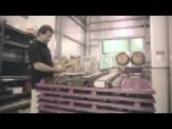

M019599 Becoming a Wine Maker
- Published 25/03/2015
- TLF-ID M019599
This is a short clip in which a winemaker describes his job and industry including some of his daily tasks, the location of the winery in south-east Queensland’s Granite Belt Region, and the role of that winemaking plays in the agrifoods industry. The winemaker, Peter, works at the Queensland College of Wine Tourism and he explains that his job involves both training students in the wine tourism industry and producing wine products for sale. This Agrifoods clip includes footage of Peter in the winery and in the processing facility, as well as images of the final bottled product.
View resource -
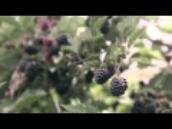

M019383 Bees and Berries a great combination
- Published 25/03/2015
- TLF-ID M019383
This is a video about part-time farmer Jeff Kynaston and how he produces and sells berry and honey products. It shows scenes of his work as he tells of his satisfaction in growing boysenberries, raspberries and blackberries; picking the berries only when they are fully ripe; selling them within two days of harvest at farmers' markets and shops: and using those not sold for jam. He explains why he started keeping bees and how he produces and sells fresh unheated honey straight from the hives. The video lasts for 2:38 min and in the latter part Kynaston wishes he could afford to work for himself full-time growing berries and keeping bees and advises students that growing good berries is best learnt by trial and error.
View resource -


M019393 Biomes that produce our food, industrial materials and fibre: producer video
- Published 08/04/2015
- TLF-ID M019393
This is a video about the mixed farming operations of Boonderoo Pastoral Company in South Australia. The farm is introduced by owner Lachie Seears who describes its size, family history and how region's Mediterranean climate allows him to diversify across a range of valuable commodities including Angus cattle, cross-breed ewes and lambs, wheat, broad beans, barley, canola and carrot seeds. Explaining how the farm is run as a system with crops on the heavy black soil and sheep and cattle grazing in areas with shelter trees, he discusses the advantages of these commodities. Sustainability is seen as the key for profitable farming for future generations and Seears comments on the strategic tree-planting being undertaken, the technologies being used for harvesting crops and monitoring irrigation, and his employment of young people. The video lasts 5:02 min and visuals of the farm provide background for the commentary.
View resource -


M019408 Biomes that produce our food, industrial materials and fibre: teacher video
- Published 08/04/2015
- TLF-ID M019408
This video supports the unit of work by the same name. Presented by a classroom teacher who has trialled the unit the video reflects on the inquiry based pedagogy and the unit's value in terms of curriculum alignment and student engagement.
View resource -
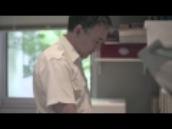

M019593 Bruny Island Providore
- Published 25/03/2015
- TLF-ID M019593
This is a short clip in which the business owner of a Tasmanian fudge company describes the establishment and development of his confectionery business. Business owner, Michael, explains the production model behind his successful enterprise including the business location, the local sourcing of raw materials, and a world’s-first packaging technology used in production. Michael also describes the personal qualities and motivations that he believes form the basis of a successful business venture in this Agrifoods clip.
View resource -


M019347 Discovering past methods of food and fibre production: producer video
- Published 08/04/2015
- TLF-ID M019347
This is a video about the native food plants of the Mount Gambier region in South Australia and how they were used by the local Buandig Aboriginal people. It is introduced by ethnobotanist and author Neville Bonney who shows a wide range of local plants, often giving their names in Bungandidj language. The plants include currant bush, golden wattle, kunzea, bulrush, succulents, wild spinach, river mint and wild celery. Bonney tells how leaves and seed pods were eaten as warm or cold vegetables, seeds were ground, roots chewed, and fibre dried for use as string or in weaving. He explains that the range of plants is determined by the conditions and by evolution and notes that some plants are now being farmed. The video lasts for 5:01 min and the final sequence shows chef Kirby Shearing preparing kangaroo rubbed with native pepper, smoked with native rosemary, and garnished with coastal saltbush, native spinach and coastal parsley.
View resource -


M019376 Discovering past methods of food and fibre production: teacher video
- Published 08/04/2015
- TLF-ID M019376
This video supports the unit of work by the same name. Presented by a classroom teacher who has trialled the unit the video reflects on the inquiry based pedagogy and the unit's value in terms of curriculum alignment and student engagement. The teacher discusses the opportunities the unit offers to engage with the cross-curriculum priorities and the historical focus of the topic.
View resource -


M019348 Exploring farms that produce our meat and wool:producer video
- Published 08/04/2015
- TLF-ID M019348
This is a video about Mayura Station in South Australia and the full-blood Wagyu beef it produces. It is introduced by owner Scott deBruin who explains the origin of Wagyu cattle in Japan; points to the characteristic marbling of its meat preferred by Asian customers; and outlines the importance of high energy grain feed to enhance the marbling. He describes how the cattle are raised on improved pastures, then go into a prescribed grain feeding program and are finally processed at an export abattoir. Visual sequences of cattle, improved pastures, crops and feeding sheds are shown and the station's own restaurant 'The Tasting Room' and chef Mark Wright are seen in operation. The video lasts for 4:15 min and in the latter part de Bruin details how the business operation is vertically integrated. He lists the countries they export to and explains why Mayura Station goes 'one step further' to market its meat directly to its customers.
View resource -


M019402 Exploring farms that produce our meat and wool: teacher video
- Published 08/04/2015
- TLF-ID M019402
This video supports the unit of work by the same name. Presented by a classroom teacher who has trialled the unit the video reflects on the inquiry based pedagogy and the unit's value in terms of curriculum alignment and student engagement.
View resource -


M019350 Exploring sustainable practices in food and fibre production:producer video
- Published 08/04/2015
- TLF-ID M019350
This is a video about how trees are grown and harvested by Green Triangle Forest Products and how facial tissues are made at Kimberley-Clark's South Australian mill. In the first part of the video, Linda Maddern Marketing Manager for Green Triangle Forest Products describes the size and importance of Australia's forestry industry; compares and contrasts forestry with farming any other commodity; and illustrates the stages in the process from site preparation to log harvest. In the second part, Scott Wicker Mill Manager at Millicent SA tells how all Kimberley-Clark's facial tissues for Australia and New Zealand are produced at the mill; shows the technology used in turning imported pulp into tissues; describes the range of occupations at the mill; and emphasises that the mill recovers and recycles 96% of its waste. The video lasts for 4:58 min.
View resource -


M019403 Exploring sustainable practices in food and fibre production: teacher video
- Published 08/04/2015
- TLF-ID M019403
This video supports the unit of work by the same name. Presented by a classroom teacher who has trialled the unit the video reflects on the inquiry based pedagogy and the unit's value in terms of curriculum alignment and student engagement. The teacher discusses the opportunities the unit offers to engage with the cross-curriculum priority of sustainability.
View resource -


M019437 Exploring the production and marketing of seafood: producer video
- Published 08/04/2015
- TLF-ID M019437
This is a video about how wild-caught lobsters are processed for export and barramundi are farmed in two South Australian businesses. The first part is presented by Andrew Laurie, the owner of Sky Seafoods, who shows the work of the lobster fishermen who supply him and how the lobsters are processed. He describes how sustainability is ensured by government regulation and how the China-Australia Free Trade Agreement will benefit his live export business. The second part is presented by the Managing Director of Robarra, Lance Vater. To the background of scenes in and around the Robarra fish farm, he explains how the immense numbers of eggs produced by female barramundi, the small amount of land required for a bore-fed fish farm, the favourable ratio of feed to growth, and the recycling of nutrient-rich water give barramundi aquaculture the potential to help meet the challenges of feeding the world in 2050. The video lasts 5:01 min.
View resource -


M019445 Exploring the production and marketing of seafood: teacher video
- Published 08/04/2015
- TLF-ID M019445
This video supports the unit of work by the same name. Presented by a classroom teacher who has trialled the unit the video reflects on the inquiry based pedagogy and the unit's value in terms of curriculum alignment and student engagement.
View resource -


M019431 Farms and people’s connections to them: producer video
- Published 08/04/2015
- TLF-ID M019431
This is a video about the operation of the Outback Pride project and the value of the Australian native food produced in conjunction with Aboriginal peoples. To a visual background of the nursery at Reedy Creek in South Australia and some of 25 Aboriginal communities involved in the project in SA and Northern Territory, Mike and Gayle Quarmby explain that Outback Pride produces 40 tonnes of native foods a year; grows up to 60 plant species, works with Aboriginal Elders to identify the best species, propagates plants at the nursery and grows them there and in the communities' gardens. The couple also point out the food's health, environmental and historical values. The involvement of schools and students is seen as important and a teacher at Renmark High School describes the benefits. The video lasts 5:11 min and in the last part, the project's grocery products are displayed and the rapid deployment of its fresh herbs, fruits and vegetables to restaurants in Australia and Asia exemplified.
View resource -


M019443 Farms and people's connections to them: teacher video
- Published 08/04/2015
- TLF-ID M019443
This video supports the unit of work by the same name. Presented by a classroom teacher who has trialled the unit the video reflects on the inquiry based pedagogy and the unit's value in terms of curriculum alignment and student engagement. The teacher discusses the opportunities the unit offers to engage with the cross-curriculum priorities and the historical focus of the topic.
View resource -


M019387 Farm Diaries: producer video
- Published 08/04/2015
- TLF-ID M019387
This is a video about pig production at the Tintinara property of the Mount Boothby Pastoral Company in South Australia. Pigs at various stages are shown, including nursing piglets, weaned piglets weighing between 7 and 10k, and pigs close to a live weight of 100k. Pig producer Alastair Johnson gives statistics about the sizes of the Australian pig herd and the Tintinara farm herd; the length of pig gestation; how long piglets are 'on mum' (nursing) on his farm; the average number of weaned piglets per sow; how fast piglets put on weight; and the features make the pig a good animal for food production. He demonstrates how his pigs are housed in naturally-ventilated, straw-laid igloos and fed a nutritious diet from crops raised on the farm. The video lasts 4:46min and in the final sequences Johnson lists the various markets for his baconer pigs and explains why fresh pork imports from overseas are prohibited to protect the Australian pork industry's clean green image.
View resource -


M019430 Farms have distinctive features: producer video
- Published 08/04/2015
- TLF-ID M019430
This is a video about action for sustainability on the Willalooka Pastoral Company's property in South Australia. Owner Thyne McGregor describes the natural characteristics of the extensive property in terms of its rainfall, soil quality and the Marcollat Watercourse. He tells how the property was originally cleared for pasture. Emphasising the importance of ecosystems for sustainability, he explains the operation of an 800 ha project to regenerate eight inter-connected wetlands along the watercourse. The video lasts 5:08 min and in the latter part McGregor discusses the critical importance of water for stock production and points out other ways the property is seeking to be sustainable. These include solar power generation; paddock mapping and rotational grazing; lift-up fences and gates; fertilising, where needed, utilising some non-traditional fertilisers; and a long-term plan to improve lower-yield grass species.
View resource -


M019389 Finding farms: producer video
- Published 08/04/2015
- TLF-ID M019389
This is a video about how lobsters are harvested and processed in South Australia for live export to China. In the first part of the video, Mark Denton, a professional rock lobster fisherman describes how the sustainability of the lobster fishery is ensured; compares and contrasts his work with farming any other form of livestock; shows the technology he uses; and illustrates the stages in the fishing process from placing the pots to selling the live lobsters to processors. In the second part, Andrew Laurie, a rock lobster processor and the owner of Sky Seafoods tells how and why the lobsters are graded and placed in temperature-controlled holding tanks. He describes his care of the live lobsters as 'a farm within a farm' using world's best practice. He points to the lobsters' advantage in the Chinese market due to their colour, strength and taste. The video lasts for 4:36 min.
View resource -


M019401 Finding farms: teacher video
- Published 08/04/2015
- TLF-ID M019401
This video supports the unit of work by the same name. Presented by a classroom teacher who has trialled the unit the video reflects on the inquiry based pedagogy and the unit's value in terms of curriculum alignment and student engagement.
View resource -


M019597 Food security researcher
- Published 25/03/2015
- TLF-ID M019597
This is a short clip in which a dietician, Kate, describes a food security research project she is working on and includes details about what food security is, the skills employed by researchers and what she enjoys about her project topic. Kate provides encouragement for undertaking work experience to find out more about at careers and opportunities in dietetics, agribusiness and research. This Agrifoods clip includes footage of Kate in a small productive garden.
View resource -


M019595 Get Shucked Oysters
- Published 25/03/2015
- TLF-ID M019595
This is a short clip about a Tasmanian oyster farmer producing and serving farm-fresh oysters on site on Bruny Island. In this clip, oyster farmer and business owner, Joe Bennett, describes how he established his business from very small beginnings and has grown it to satisfy consumer demand. Watch to find out how this primary producer brings seafood products from the paddock in the sea to the plate on the table. This Agrifoods clip includes images of the oyster farm, the processing facility and the Get Shucked oyster bar where the final product is consumed.
View resource -
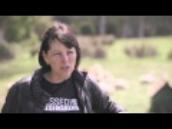

M019329 Grandvewe - Cheese Farm - cheese also comes from sheep!! Tasmania
- Published 25/03/2015
- TLF-ID M019329
This is a video about farmer and cheesemaker Diane Rae and how she and her children established a sheep dairy agribusiness. It shows scenes of Grandvewe farm and cheesery as she speaks of how they learnt to be sheep farmers; researched dairy sheep overseas; and changed production systems as a result of experience. She tells of the importance of creating an end product, not just growing a commodity, as the key to agribusiness success. The video lasts for 3:23 min and in the second half Rae gives detailed advice to young people wanting to establish an agribusiness.
View resource -


M019598 IConnect Electrician supports Agribusiness in Tasmania
- Published 25/03/2015
- TLF-ID M019598
This is a short clip in which electrical contractor, Luke, describes his job working as an electrician specialising in agricultural irrigation. Luke describes his path to his current job, beginning with an apprenticeship in the family business, and also explains what he enjoys about his job and the benefits of working in the agricultural sector. This clip includes footage of Luke on site working on a farm irrigation system.
View resource -
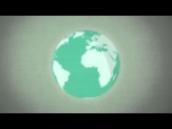

M019365 Introduction to Food Security
- Published 25/03/2015
- TLF-ID M019365
This is a video that defines and explores the concept of food security using animated illustrations, spoken commentary, and pauses for discussion. Identifying the accelerating growth of population and the proportion of people who are chronically hungry, it provides the United Nation's definition of food security and its associated dimensions of availability, access, utilisation, and stability. It focuses on the need for healthy food and equality of food distribution. The video lasts for 2:49 min and the last part discusses the re-emergence of local food systems in which food is grown, processed, packaged and consumed in the same local community.
View resource -
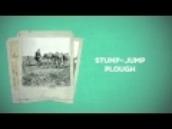

M019332 Introduction 'Technology' in AgriBusiness (Animation)
- Published 25/03/2015
- TLF-ID M019332
This is a video about how Australian farmers embrace technology. Using animation, photographs and commentary with occasional puns and jokes by a primary-school--aged boy, it sets the scene of the overall impact of technology, describes why Australian farmers have always been innovative; provides a definition of technology; and gives examples of technology in farming. An historical example of the invention of the stump-jump plough is followed by a contemporary example of the breeding of a 'perfect prawn' by the CSIRO. The fast-paced video lasts for 2:23 min and ends with a summary of three improvements technology in agriculture have brought about in caring for the environment, increasing farming output, and building farmers' incomes.
View resource -


M019361 Investigating Australian approaches to producing fish, seafood and meat: producer video
- Published 08/04/2015
- TLF-ID M019361
This is a video about the Robarra barramundi aquaculture operations at West Beach and Robe in South Australia. Presented by Lance Vater, Managing Director of the Vater Corporation that includes Robarra, it shows the stages of production from an egg to a 100mm fingerling at West Beach; the feeding and grading of fish in tanks at Robe until they reach 1.5 kilos; the road train transport between sites and to market; and the use made of the farm's nutrient-rich water for pasture production. Vater tells why barramundi were chosen for farming and describes how water from Spencer Gulf is filtered at the hatchery. He explains the economic efficiencies of finding an aquaculture farm site with access to heated artisan water and of using floating pellets to manage food supply in order to achieve the ratio of 1 kilo of growth to 1.4 kilo of food. The video lasts for 5:04 min.
View resource -


M019386 Investigating key Australian approaches to producing cotton, timber and wool: producer video
- Published 08/04/2015
- TLF-ID M019386
This is a video about short wool sheep breeds and how their wool is used at the MiniJumbuck factory at Narracorte South Australia to make quilts, underlays and pillows. Sheep are seen on farms as merino sheep producer Thyne McGregor and Southdown breeder Dee Nolan discuss the strengths of each type of wool and how each is used. The greater part of the video then shows the various stages of production at the MiniJumbuck factory including scoured and treated wool being unpacked, teased to a fairy floss consistency in the carding machine, attached to a quilt cover, and stitched into place. Retail manager Ollie Homan describes the process; tells of the amount of wool used and its source and thickness; highlights the advantages of wool quilts; and explains how MiniJumbuck has achieved brand recognition and a three-fold increase in productivity using computerised technology. The video lasts for 4:53min.
View resource -


M019404 Investigating Australian approaches to producing fish, seafood and meat: teacher video
- Published 08/04/2015
- TLF-ID M019404
This video supports the unit of work by the same name. Presented by a classroom teacher who has trialled the unit the video reflects on the inquiry based pedagogy and the unit's value in terms of curriculum alignment and student engagement. The teacher discusses the opportunities the unit offers to engage with the cross-curriculum priority of sustainability.
View resource -


M019407 Investigating key Australian approaches to producing cotton, timber and wool: teacher video
- Published 08/04/2015
- TLF-ID M019407
This video supports the unit of work by the same name. Presented by a classroom teacher who has trialled the unit the video reflects on the inquiry based pedagogy and the unit's value in terms of curriculum alignment and student engagement.
View resource -


M019446 Investigating technologies in agriculture: teacher video
- Published 08/04/2015
- TLF-ID M019446
This video supports the unit of work by the same name. Presented by a classroom teacher who has trialled the unit the video reflects on the inquiry based pedagogy and the unit's value in terms of curriculum alignment and student engagement.
View resource -


M019438 Investigating technologies in agriculture: producer video
- Published 08/04/2015
- TLF-ID M019438
This is a video about how facial tissues, kitchen towels and toilet paper are made at Kimberley-Clark's South Australian mill. Mill Manager Scott Wicker describes how the mill takes base wood pulp and turns it into finished products. He outlines the differences between long and short wood pulp fibres and where they are grown and explains every stage of the tissue paper production process. This includes how the pulp is diluted with water, pumped around the mill, made into one-ply tissue, dried at high speed, blended for different product capabilities, wound into rolls, rewound into two- or three-ply rolls, converted into different products, packaged, stacked in pallets, and finally despatched to distribution centres. The video lasts 4:26 min and in the latter part he points to the cutting edge technology used at the mill and the high levels of skill and training required in the workforce.
View resource -
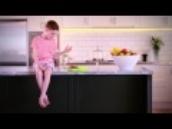

M019331 Lunchbox Legends - the people behind your lunch (Animation)
- Published 25/03/2015
- TLF-ID M019331
This is a video about the various occupations involved in developing and producing the food used in a ham and salad lunch roll. The video is presented by Will, a primary-school-aged boy, who identifies and describes nine occupations in several broad groups including researchers, growers of plant food; producers of animal products; and transport professionals. Will's commentary includes jokes, riddles and hyperbolic vocabulary, as well as questions and comments directly addressed to the viewer. It is supported by animated illustrations. The video lasts for 4:41min and ends with Will suggesting viewers might like to take up one of the occupations and become 'a legend in your own lunchbox'.
View resource -
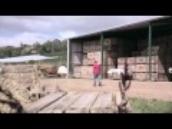

M019381 Mouat Farms - an Apple Orchard and much more. Batlow, New South Wales
- Published 25/03/2015
- TLF-ID M019381
This is a video about orchardist and jam-maker Kris Mouat and how she and her husband operate a fruit agribusiness. It shows scenes of their 'Wyola' property as she speaks of how she came to orcharding and now makes jam from fruits and berries, and how they operate a roadside shop and a pick-your-own-fruit facility. She comments on the positive nature of life in the country; the research that assists them; the local industries they work with; and their membership of the Batlow Fruit Co-operative. The video lasts for 2:38 min and in the final segment Mouat assures young people who want to work in the country that they will find an aspect of agribusiness to suit them.
View resource -


M019395 Out and about on farms: teacher video
- Published 08/04/2015
- TLF-ID M019395
This video supports the unit of work by the same name. Presented by a classroom teacher who has trialled the unit the video reflects on the inquiry based pedagogy and the unit's value in terms of curriculum alignment and student engagement. The teacher discusses the opportunities the unit offers to engage with the cross-curriculum priorities in the topic.
View resource -
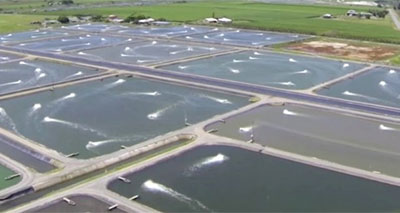

M019596 Prawn Farming
- Published 25/03/2015
- TLF-ID M019596
This is a short clip in which Gold Coast prawn farner, Nick Moore, describes the prawn farming industry, the business he manages, and the high standards of the Australian industry. Nick, explains why this business is more like agricultural farming than fishing and how his qualifications and experience more closely match farming. This Agrifoods clip includes images and descriptions of a prawn farm and the techniques and processes employed to produce the final prawn product.
View resource -


M019385 Producing cattle and sheep...and beef and lamb: producer video
- Published 08/04/2015
- TLF-ID M019385
This is a video about the operation of a Southdown sheep stud and olive plantation at Gum Park farm in South Australia. Introduced by farmer Dee Nolan, it shows the sheep in the olive groves, the lambing paddocks and birthing shed as she describes the farm's certified organic approach that starts from the soil up and uses an integrated system to combine ram and olive production. She defines a stud, explains why Southdown sheep are particularly valuable for meat production, demonstrates how the pregnant ewes and newborn lambs are protected from foxes and bad weather; and emphasises the importance of maintaining the Southdown gene pool. Livestock consultant Tim Fencham reinforces her comments about the value of Southdown sheep and meat and describes how the ewes are artificially inseminated. The video lasts for 5:06 min.
View resource -


M019406 Producing cattle and sheep...beef and lamb: teacher video
- Published 08/04/2015
- TLF-ID M019406
This video supports the unit of work by the same name. Presented by a classroom teacher who has trialled the unit the video reflects on the inquiry based pedagogy and the unit's value in terms of curriculum alignment and student engagement. The teacher discusses the opportunities the unit offers to engage with the cross-curriculum priority of sustainability.
View resource -


M019433 Researching produce in the local region: producer video
- Published 08/04/2015
- TLF-ID M019433
This is a video about the food produce of the Limestone Coast region of South Australia. Presented by Hilary Ellis, Food Ambassador for the region, it shows food being produced and then sold in farmers' markets as she describes how the characteristics of various regions affect what is grown and produced there. She details the wide diversity of the Limestone Coast's agricultural produce and the reasons for it. She suggests that local farmers' markets, food trails and food festivals are good places to start researching what is grown in a particular region and goes on to explain how her local farmers' market showcases the diversity of seasonal produce grown within a 200k radius of Mount Gambier. The video lasts 4:24 min and concludes with Ellis emphasising the importance of remembering that the food shown in the video feeds not only the local community but also other parts of Australia and overseas and that the region's location facilitates food distribution.
View resource -


M019444 Researching produce in your local region: teacher video
- Published 08/04/2015
- TLF-ID M019444
This video supports the unit of work by the same name. Presented by a classroom teacher who has trialled the unit the video reflects on the inquiry based pedagogy and the unit's value in terms of curriculum alignment and student engagement.
View resource -
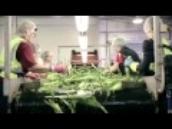

M019380 Rugby Farms – Horticulture and changes in farming practice
- Published 25/03/2015
- TLF-ID M019380
This is a video about farmer and business man Matt Hood and how he, his father and brother operate Rugby Farm, a vegetable production agribusiness. It shows scenes of the business past and present as he tells of the many generations who have worked the farm, the 12,000 acres of vegetables grown each year, and the exciting and reactive nature of vegetable production. Speaking of changes in the business, he points out that the grower must now deliver what the customers want to buy, not what the farmer is able to grow, and he goes on to identify the strength of Rugby Farm's relationship with Coles Supermarkets. The video lasts for 2:36 min and concludes with Hood expressing his love for what he does and his belief that nothing could be more rewarding than growing healthy food for the people of Australia.
View resource -


M019594 Rugby Farms vegetable farm - different roles of employees
- Published 25/03/2015
- TLF-ID M019594
This is a short clip about a large business producing vegetables in Stanthorpe, Queensland for local and international markets. In this clip, a business manager describes the size of the business in terms of number of employees and physical area. It also shows three employees, a staff trainer, an agronomist and a boiler maker, describing their highly varied jobs within the business including their tasks, positive aspects of their job, and future aspirations and opportunities for themselves. This Agrifoods clip includes footage of employees working in the field, in processing sheds and in workshops.
View resource -
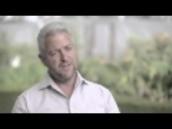

M019328 Weston Farm - organic farm (Tasmania)
- Published 25/03/2015
- TLF-ID M019328
This is a video about horticulturalist and farmer Richard Weston and his success in growing high quality organic food and flowers. It shows scenes of Weston Farm as he speaks of his commitment to quality niche products, the importance of diversification in small-scale farming, and the value of overseas research. He goes on to explain why he established a café in Hobart and how important it is provide people with employment. The video lasts for 3:06 min and ends with advice to young people on how to succeed in Agriculture.
View resource -
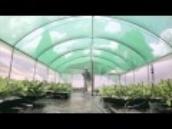

M019382 Waratah Australis Nursery (flowers) – Batlow, New South Wales
- Published 25/03/2015
- TLF-ID M019382
This is a video about plant breeder and nursery owner Brian Fitzpatrick and his work of breeding waratahs. It shows scenes of his activities in the Waratah Australis Nursery as he speaks of the magnificence of waratahs; the stages in the breeding process including hand-pollination and the production of 12,000 seedlings annually; the time it takes to develop a new variety and receive a commercial return; and his love for the work. He describes the Open Day held in 2013 and his plans for the future of the property, The video lasts for 2:38 min and in the final segment Fitzpatrick advises students to keep an open mind about agribusiness, investigate the research, and 'go for broke'.
View resource -
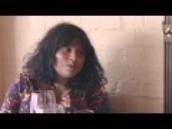

M019330 What do authors do besides writing – they farm truffles?
- Published 25/03/2015
- TLF-ID M019330
This is a video about author and farmer SD Gentill and how she combines writing with growing black truffles. It consists of an interview in which she answers questions posed by Will, a young boy. To a background of scenes from her Snowy Mountains farm and a Brisbane restaurant she supplies, Gentill explains how truffles are grown and hunted for with dogs, and how the seasonal nature of truffle growing allows her time to write. The video lasts for 3:18 min and in the latter part Gentill cites her own experience in telling Will that being born in the country is not necessary for becoming a farmer.
View resource
